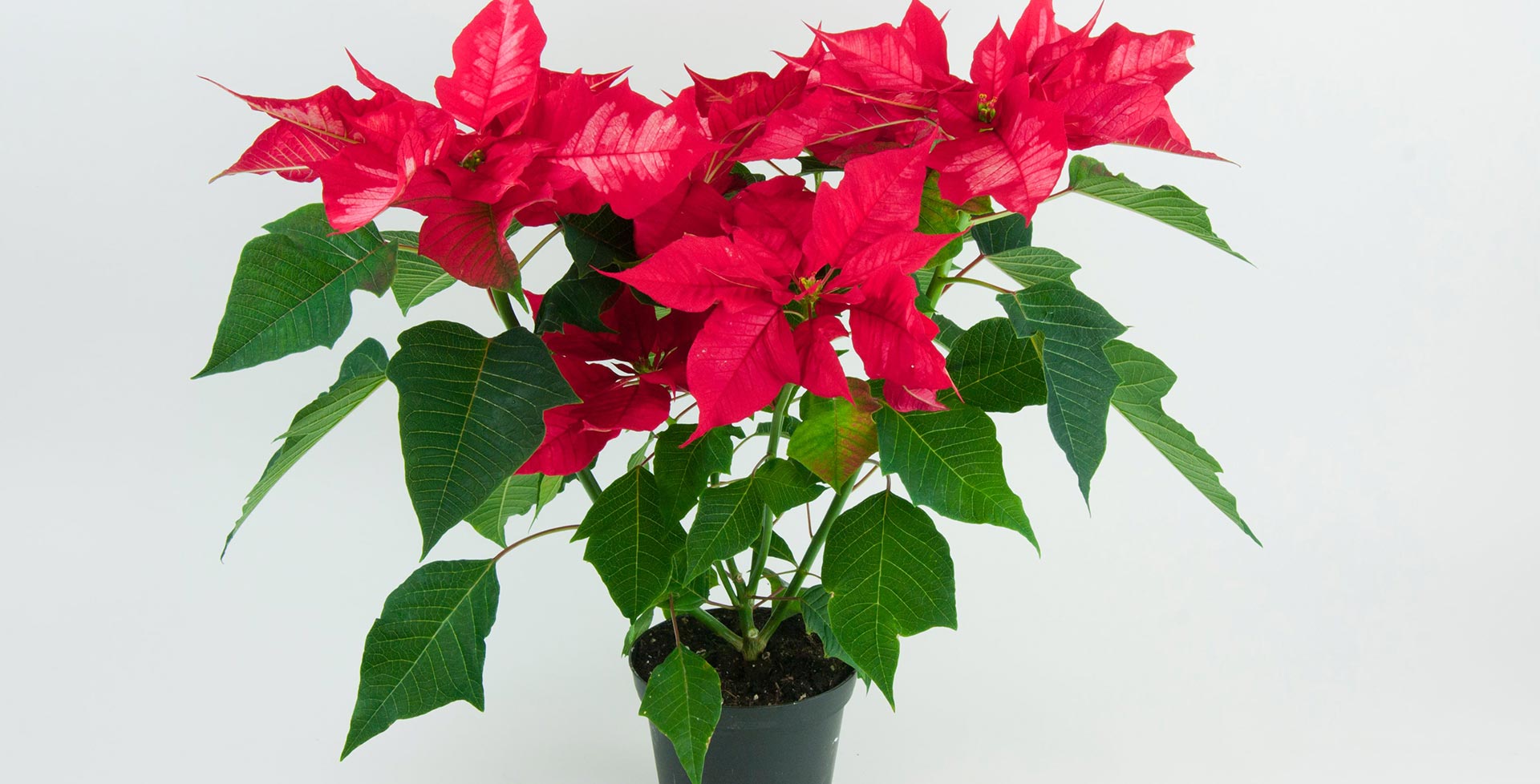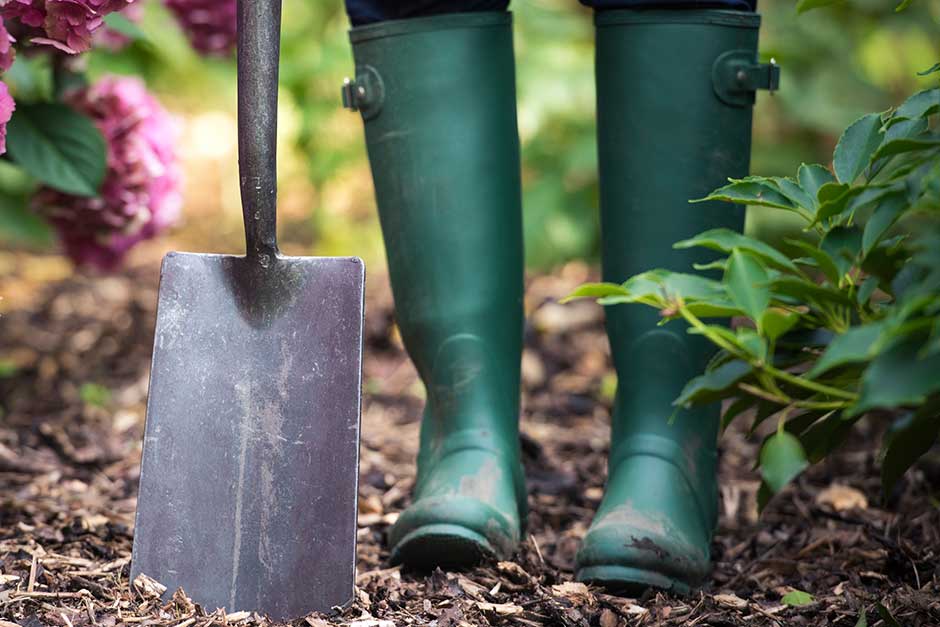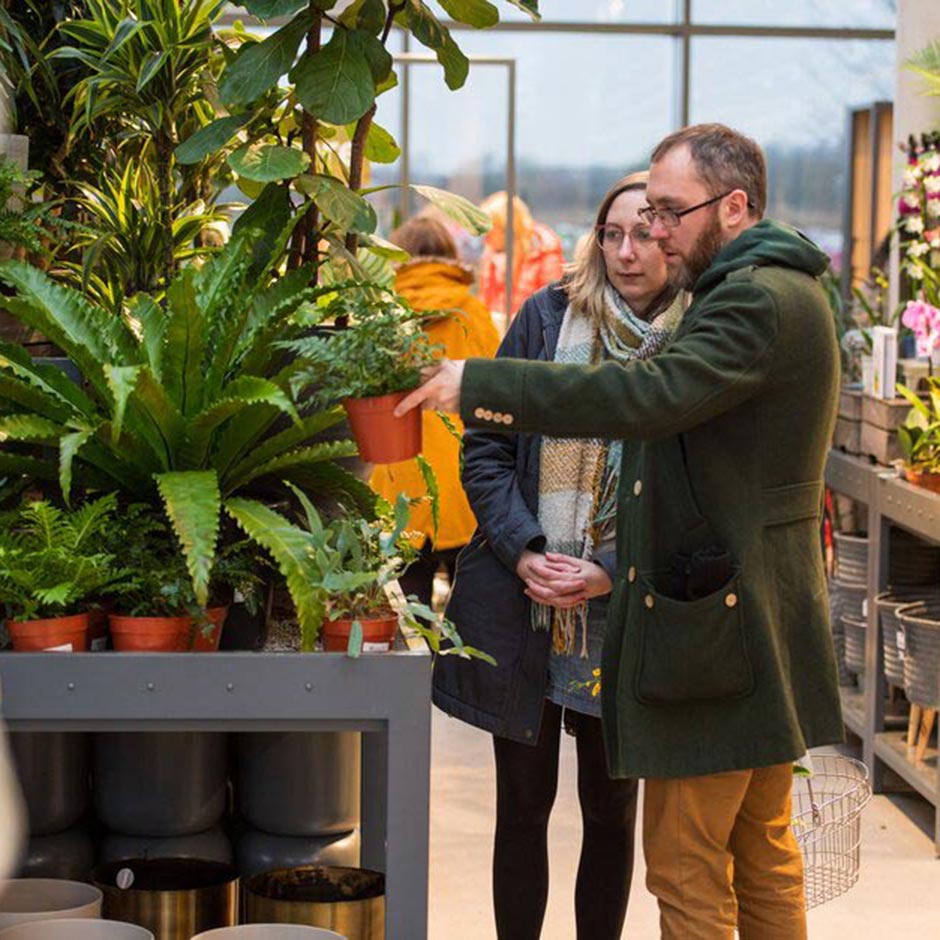
Introducing...
Poinsettias
Botanical name: Euphorbia pulcherrima
Popular as Christmas houseplants, the poinsettia is a widely available and brings a splash of colour to our homes in winter.
Looks
Firm, branching stems, carry large, soft leaves and at their tips showy red, pink or cream bracts (rather than petals). The actual flowers are the small, yellow ball-like structures at the top of each stem.
Likes
These plants like bright light, but away from direct sunshine, with a fairly consistent temperature around 16-21° (65-70°F). Water them to keep the compost just moist (so not dry or soggy), watering when the surface of the compost feels dry to the touch.
Dislikes
Poinsettia dislike hot, dry conditions such as near radiators; cold and draughty spots including in empty hearths or windowsills over night. Try not to over- or under-watering by keeping the compost just moist. Avoiding these dislikes prevents the common problem of plants dropping their bracts and leaves over.
Did you know?
Take note of where the retailer has their poinsettia for sale. Avoid those outdoors on the pavement or in a draughty, cold shop as these chilly conditions will often cause the colourful bracts to drop off within days of your purchase. Where possible, buy from a warm greenhouse at a garden centre or where they have arrived freshly inside stores such as supermarkets and DIY centres.
Growing guide

How to grow poinsettias
All the information you’ll need to grow and care for poinsettias in your home.
Poinsettias we recommend
Euphorbia pulcherrima 'Ice Punch'PBR
poinsettia 'Ice Punch'
- 0.1–0.5 metres
- 0.1–0.5 metres
Euphorbia pulcherrima 'Autumn Leaves'
poinsettia 'Autumn Leaves'
- 0.1–0.5 metres
- 0.1–0.5 metres
Euphorbia pulcherrima 'Ice Punch'PBR
poinsettia 'Ice Punch'
- 0.1–0.5 metres
- 0.1–0.5 metres
Euphorbia pulcherrima 'Autumn Leaves'
poinsettia 'Autumn Leaves'
- 0.1–0.5 metres
- 0.1–0.5 metres
Useful advice
Hippeastrum
Begonias: houseplants

Choosing the best houseplants

Bulbs for Christmas flowering

Christmas-flowering houseplants
Get involved
The Royal Horticultural Society is the UK’s leading gardening charity. We aim to enrich everyone’s life through plants, and make the UK a greener and more beautiful place.